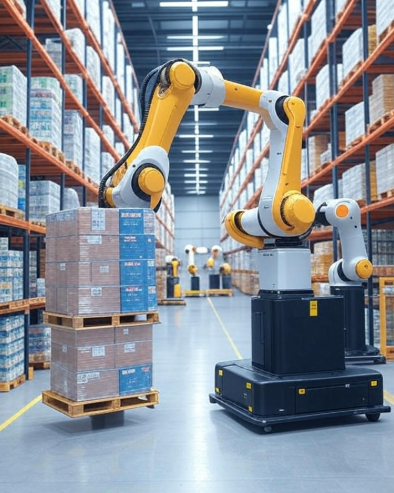Remember the last time you waited on hold for 45 minutes just to ask a simple question about your order? Or when you sent an email to customer support and got a response three days later saying “Sorry for the delay”? Yeah, we’ve all been there. It’s frustrating, time-wasting, and honestly, it makes you wonder if companies actually care about their customers.
Here’s the thing though – businesses aren’t ignoring you on purpose. They’re drowning in customer queries. With online shopping exploding and people expecting answers at 2 AM on a Sunday, traditional customer support teams just can’t keep up anymore. That’s where chatbots come in, and trust me, they’re not what you think they are.
The Reality Check: Why Traditional Support Is Struggling
Let’s be honest about what’s happening in customer service right now. Most companies are stuck between a rock and a hard place. On one side, customers want instant answers. On the other side, hiring enough support staff to be available 24/7 costs a fortune. A single customer support agent costs a business anywhere from $30,000 to $50,000 annually, and that’s just for regular business hours.
Then there’s the consistency problem. Ever noticed how you get different answers depending on which support person you talk to? One agent tells you returns are free, another says there’s a $10 fee. It’s confusing and makes companies look unprofessional, even when they’re trying their best.
And here’s something most people don’t realize – about 70% of customer questions are repetitive. “Where’s my order?” “What’s your return policy?” “How do I reset my password?” Support teams spend most of their day answering the same questions over and over, which isn’t exactly the best use of human talent.
Enter Chatbots: Not Your 2015 Version
When most people hear “chatbot,” they think of those annoying pop-ups from a few years ago that would say “How can I help you?” and then completely fail to understand anything you typed. I get it. Those were terrible. But chatbots in 2025 are completely different animals.
Modern chatbots use something called natural language processing, which basically means they can actually understand what you’re asking, even if you phrase it weirdly or make typos. They’re powered by artificial intelligence that learns from every conversation, getting smarter over time. Some of them are so good now that you genuinely can’t tell if you’re talking to a bot or a human – until they answer your question in three seconds flat.
How Businesses Are Actually Using Chatbots (The Real World Stuff)
Let me break down what’s actually happening out there, because this isn’t science fiction – it’s happening right now at companies you probably interact with every day.
The Always-On Support Team
First up, chatbots never sleep. Sounds obvious, but think about what this means. If you’re running an e-commerce store and someone in Australia has a question at midnight your time, the chatbot handles it. No waiting until morning. No lost sale because the customer got frustrated and went to your competitor.
I was talking to a friend who runs a small online business selling handmade jewelry. She installed a chatbot six months ago, and here’s what happened: her sales from international customers jumped by 40%. Why? Because people in different time zones could actually get their questions answered when they were shopping, not 12 hours later when they’d already forgotten about her website.
Handling the Simple Stuff (So Humans Can Handle the Complex Stuff)
This is where chatbots really shine. They’re perfect for answering straightforward questions. Order tracking, store hours, return policies, password resets, product availability – all the basic stuff that doesn’t need human judgment but takes up massive amounts of support time.
Here’s a real example: Sephora, the beauty retailer, uses a chatbot that helps customers track orders, find store locations, and book makeover appointments. These are all tasks that used to require calling or emailing support. Now they’re instant. This freed up their human support team to focus on complex issues like damaged products, billing disputes, or detailed product recommendations.
Personalization That Actually Works
Modern chatbots can access your purchase history, browsing behavior, and previous conversations. This means they can give you personalized help instead of generic responses. If you bought a coffee maker last month and now you’re asking about it, the chatbot knows exactly which model you have and can give you specific troubleshooting steps.
Netflix uses chatbots to help with account issues, and the bot knows what shows you’re watching, what device you’re using, and what problems you’ve had before. It’s like having a support person who actually remembers you, which is something even human support often fails at.
The Multilingual Advantage
Here’s something really cool – good chatbots can communicate in dozens of languages instantly. No need to hire support staff for each language or make customers wait for the Spanish-speaking agent to be available. The bot just switches languages and keeps going.
A clothing company called H&M rolled out chatbots that support over 30 languages. Suddenly, they could provide the same quality support to customers in Tokyo, São Paulo, and Stockholm without tripling their support budget.
The Money Side of Things (Because It Always Matters)
Let’s talk about what everyone’s thinking – does this actually save money or is it just hype?
The numbers are pretty clear. IBM did a study showing that businesses can save up to 30% on customer support costs by implementing chatbots. That’s because one chatbot can handle thousands of conversations simultaneously, while a human agent can only handle one, maybe two at a time.
But it’s not just about cutting costs. Chatbots also increase revenue. When customers get instant answers, they’re more likely to complete purchases. Juniper Research found that chatbots will help businesses save $11 billion annually by 2025 while simultaneously boosting sales through better customer engagement.
A small business with 10 support staff might spend $400,000 a year on salaries and overhead. Adding a chatbot that handles 60% of routine queries could let them reduce that team to 6 people without sacrificing service quality. That’s $160,000 saved, which for a small business, is huge.
The Problems Nobody Talks About (But Should)
Okay, time for some real talk. Chatbots aren’t perfect, and anyone telling you they are is trying to sell you something.
The biggest issue? Chatbots still struggle with complex, emotional, or nuanced situations. If a customer is really upset about something, or if there’s a complicated issue that requires judgment and empathy, chatbots often fall flat. They can come across as cold or robotic when someone needs genuine human connection.
There’s also the setup challenge. Building a good chatbot isn’t as simple as flipping a switch. You need to train it on your specific products, policies, and common customer issues. This takes time and expertise. I’ve seen companies rush to implement chatbots without proper setup, and the result is actually worse than no chatbot at all – frustrated customers and a damaged reputation.
And here’s something important: not everyone likes chatbots. Some customers specifically want to talk to a human, and forcing them to go through a bot first just annoys them. The best systems give people an easy, obvious way to reach a human agent when they need to.
The Winning Formula: Humans + Chatbots
The companies getting this right aren’t replacing humans with chatbots – they’re combining them. It’s like a tag team where each player does what they do best.
The chatbot handles the high-volume, simple stuff: order status, basic troubleshooting, FAQs, appointment scheduling. When something complex or sensitive comes up, it smoothly hands the conversation over to a human agent, along with all the context from the chat so the customer doesn’t have to repeat themselves.
Shopify does this brilliantly. Their chatbot, Kit, handles routine merchant questions and simple setup tasks. But the moment a merchant has a complicated technical issue or is frustrated, Kit passes them to a human support specialist who can see the entire conversation history.
What This Means for Your Business (Practical Steps)
If you’re running a business and thinking about chatbots, here’s my honest advice:
Start small. Don’t try to automate everything at once. Pick your top 10 most common customer questions and build a chatbot that can handle those. Then expand gradually as you see what works.
Choose the right platform. There are tons of chatbot platforms out there – Intercom, Drift, ManyChat, Tidio, and others. Some are simple and affordable for small businesses, others are enterprise-level solutions. Match the tool to your actual needs and budget.
Train it well. Spend time setting up your chatbot properly. Feed it your FAQs, common issues, product information, and your brand voice. A poorly trained chatbot is worse than no chatbot.
Always provide a human escape hatch. Make it easy for customers to reach a real person. Nothing frustrates people more than being trapped in an endless loop with a bot that can’t help them.
Measure and improve. Track metrics like resolution rate, customer satisfaction, and how often people ask to speak to a human. Use this data to continuously improve your chatbot.
The Futur Is Already Here
Here’s what’s wild – we’re only scratching the surface of what chatbots can do. The technology is evolving so fast that what seems impressive today will be standard in six months.
We’re already seeing chatbots that can process voice commands, analyze images (like uploading a photo of a damaged product), and even detect customer emotions through text to adjust their responses accordingly. Some can proactively reach out to customers who seem stuck on a website page or abandoned their cart.
The chatbots of 2025 are infinitely better than those of 2020, and the ones coming in 2026 will make today’s look primitive. But the core principle remains the same: give customers quick, helpful answers so they can get what they need without frustration.
Insights
Chatbots are transforming customer support because they solve a real problem – the gap between what customers expect (instant, accurate, 24/7 help) and what businesses can realistically provide with human-only support teams.
They’re not replacing human support agents, but they are changing what those agents do. Instead of answering “Where’s my order?” for the hundredth time today, support staff can focus on complex problems, upset customers who need empathy, and situations that require human judgment.
For customers, this means faster responses, consistent information, and help available whenever they need it. For businesses, it means lower costs, happier customers, and support staff who aren’t burned out from repetitive tasks.
The companies winning at customer support in 2025 aren’t the ones with the biggest support teams – they’re the ones who’ve figured out how to blend smart technology with genuine human care. Chatbots are a tool, and like any tool, they work best when used thoughtfully for the right job.
So next time you interact with a chatbot, cut it some slack. It’s probably saving you from a 45-minute wait on hold. And if it can’t help you, there’s (hopefully) a well-rested human agent ready to step in and take over.



